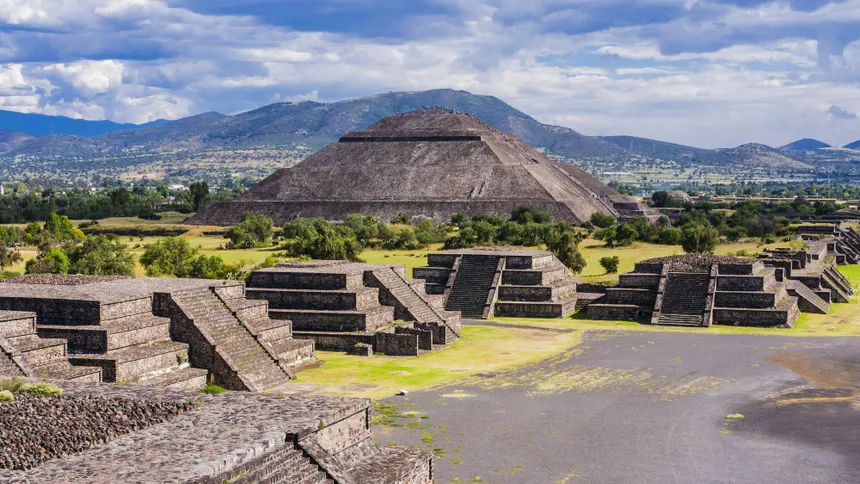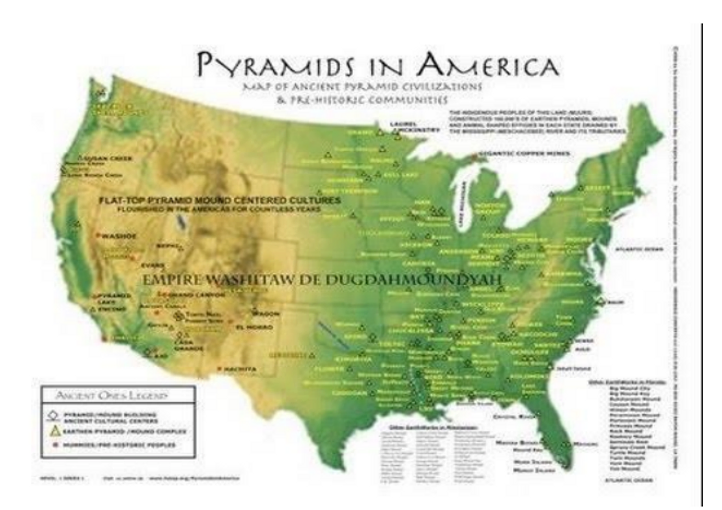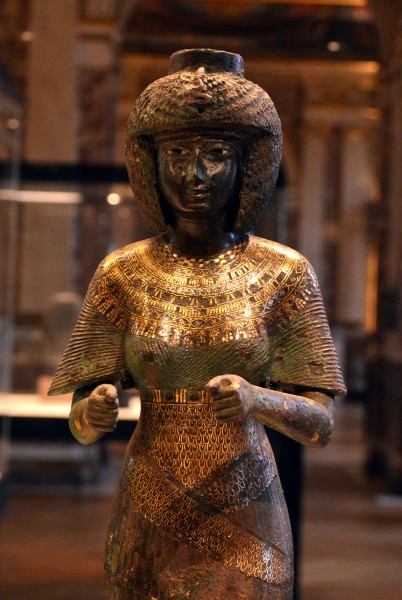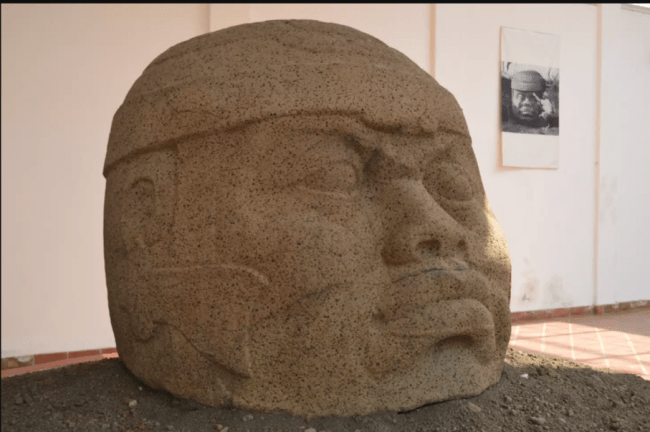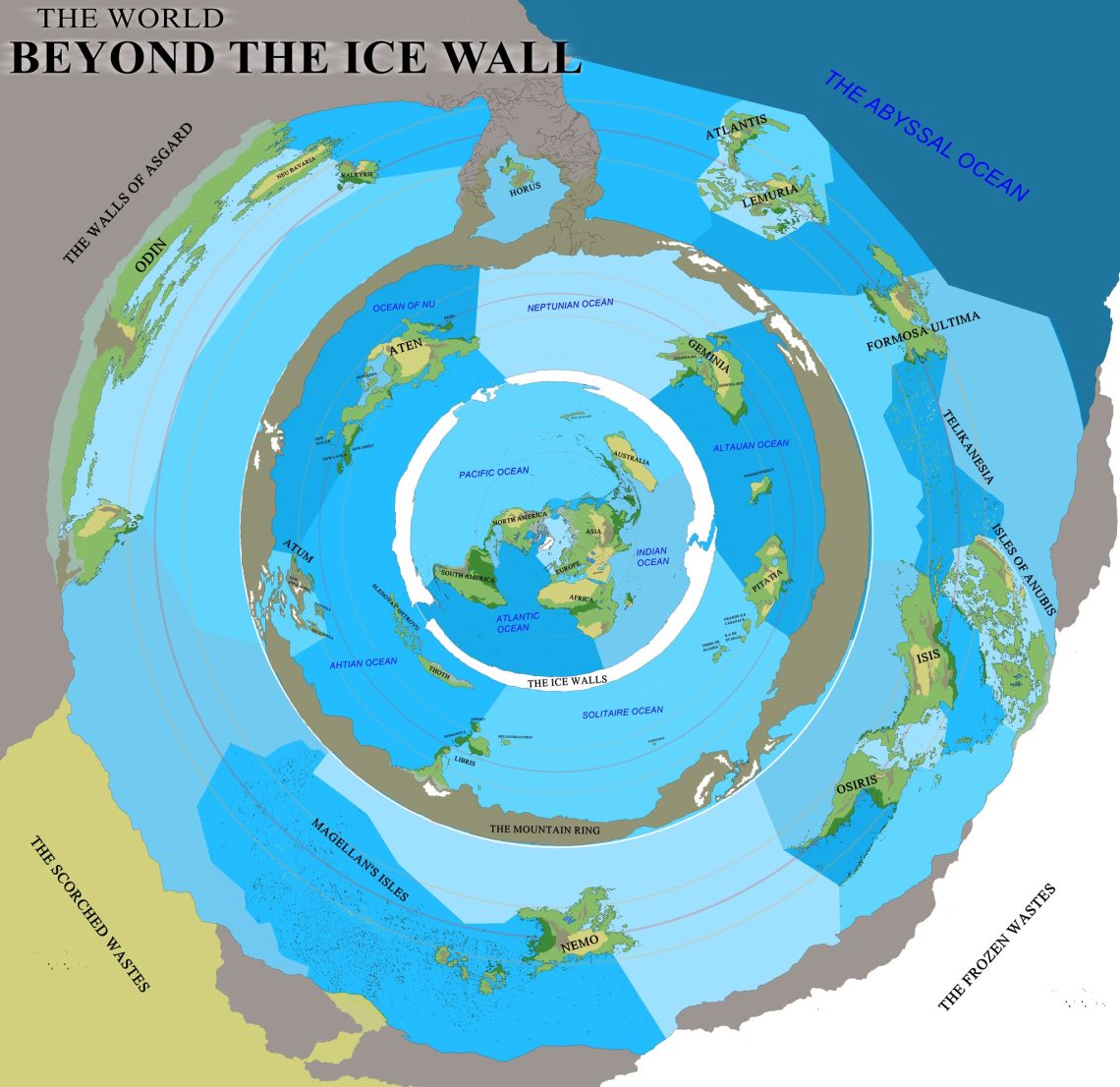Understanding the Complexity of Ancient Civilizations Before European contact, the Americas were far from a “New World”; they were instead a diverse continent of thriving cultures and societies. This article takes an expansive look at pre-Columbian civilizations across regions including the Caribbean, Middle America, the Andes, the South Atlantic, and North America. By examining each area’s unique developments in agriculture, social structure, and innovation, we gain insight into the intricacies of these ancient cultures. The Caribbean: Island Cultures and Complex Societies of the Taínos and Caribs In the Caribbean, the Taíno and Carib peoples developed distinct societies influenced by their island environments, leading to both cooperation and conflict. The Taíno occupied major islands such as Hispaniola and Puerto Rico, creating a hierarchical society based on agriculture and fishing. Known for cultivating cassava and corn, Taíno farmers utilized raised beds and other methods suited to tropical soils. Their agricultural efficiency supported populous villages led by chiefs called “caciques.” These leaders played key roles in both ceremonial life and everyday governance, cementing a structured social organization. On the smaller islands, the Carib people took a more nomadic approach, focusing on fishing and sea travel. Renowned as skilled navigators, they crafted large dugout canoes that allowed extensive trade and exploration across the Caribbean Sea. The Caribs’ movement and reputation as fierce warriors often created tension with the Taíno, illustrating an early example of intercultural dynamics in the Americas. The Taíno and Carib people inhabited the Caribbean islands, each developing unique ways of life shaped by their environments. Taíno Society and Agricultural Innovations The Taíno cultivated cassava, corn, sweet potatoes, peanuts, and cotton. Cassava, a highly resilient crop, was central to their diet, and they processed it to remove toxins. They also developed mound agriculture, a method in which crops were grown on raised beds to improve soil drainage and fertility. This technique suited the wet, tropical climate and enabled a stable food supply. Social Organization and Governance The Taíno society was organized hierarchically, with “caciques” (chiefs) who wielded authority over their communities. Caciques held both political and religious authority, guiding public life and ritual practices. The Taíno practiced a unique spiritual system known as “zemiism,” wherein carved stone or wooden idols, called “zemis,” were worshipped as spirits of ancestors or deities. Carib Sea Navigation and Warrior Society Renowned for their navigational skills, the Carib people were adept sailors who navigated open waters using large dugout canoes. These canoes could hold up to 50 people and were used for fishing, trade, and raids on other islands. The Carib warrior society emphasized strength and valor. Their warrior reputation often led to conflicts with the Taíno, who lived on the larger islands. These encounters reveal an early example of intercultural dynamics and tension. References: Wilson, S. M. (1997). The Indigenous People of the Caribbean. Gainesville: University Press of Florida. 1492: An Ongoing Voyage,” Library of Congress; Wilson, S. M. (1997). Middle America: The Aztecs and Mayans’ Contributions to Civilization Middle America, with its towering Maya temples and busy Aztec metropolis, was home to some of the Americas’ most accomplished civilizations. The Maya, inhabiting parts of present-day Mexico, Guatemala, and Honduras, were master builders and astronomers. Known for their stone pyramids, they built monumental city-states like Tikal and Copán, each governed independently but connected through trade. They also established a sophisticated writing system based on glyphs, one of the earliest known in the Americas. The Aztecs, arriving later, established their capital, Tenochtitlan, on an island in Lake Texcoco. This engineering marvel was built on a series of man-made islands connected by causeways. Using a combination of tributes and an extensive trade network, the Aztecs controlled a powerful empire stretching from the Gulf of Mexico to the Pacific. Rituals, including human sacrifice, were integral to their religious beliefs, meant to appease gods and maintain cosmic balance. In Middle America, the Aztec and Maya civilizations rose to prominence, each contributing foundational advancements to architecture, mathematics, and governance. Maya Civilization: Architecture, Astronomy, and Writing The Maya are celebrated for their towering pyramids and expansive city-states like Tikal, Copán, and Palenque. These cities served as ceremonial centers with pyramids that aligned astronomically. Their expertise in astronomy allowed them to create highly accurate calendars. They recognized cycles of Venus and tracked lunar phases, which informed both agricultural and ceremonial practices. The Mayan script, a complex system of glyphs, is one of the few indigenous writing systems of the Americas. It records historical events, including wars and alliances, on stone monuments known as stelae. Aztec Empire: Tenochtitlan, Empire Building, and Religious Practices Tenochtitlan, the Aztec capital, was built on Lake Texcoco, featuring floating gardens (chinampas) that allowed year-round cultivation. The Aztecs established an extensive tribute system in which conquered territories provided resources, crafts, and soldiers. This tribute supported the Aztec nobility and funded large-scale building projects. The Aztec religion held that sacrifices were necessary to appease the gods. Priests played a central role, and temples such as the Great Pyramid of Tenochtitlan were built for these rites, symbolizing the empire’s commitment to cosmic balance. References:Indigenous America. Authored by: Joseph Locke and Ben Wright, with content contributions by L. D. Burnett, Michelle Cassidy, D. Andrew Johnson, Joseph Locke, Dawn Marsh, Christen Mucher, Cameron Shriver, Ben Wright, and Garrett Wright. The Andes: The Inca Empire’s Architectural and Agricultural Prowess The Inca Empire, sprawling across the Andes Mountains, exemplified resilience in the face of challenging geography. The Incas’ terraced farms enabled agriculture in high altitudes, where they grew potatoes, quinoa, and maize on carved mountainsides, ensuring food security for their vast empire. They developed irrigation canals and storage systems to manage resources efficiently, forming a complex society based on cooperation and reciprocity, known as “ayllu.” In terms of architecture, the Incas left behind monumental sites like Machu Picchu, demonstrating advanced masonry skills that required no mortar. Roads and bridges spanned across steep mountains, linking distant parts of the empire, while messenger runners—called “chasquis”—carried information across long distances in record time. Spanning modern-day Peru, Ecuador, Bolivia, and
Discovering the Hidden Gems of Ancient Civilizations
“Unearthing the Secrets: Unearthing the Mysterious Treasure of Old Egypt America” Once upon a time, buried deep beneath the sands of America, lied a hidden treasure of ancient civilizations! Follow me, my friends, as we embark on a thrilling journey to uncover the secrets of Old Egypt America and its hidden gems. But before we start our adventure, let’s take a moment to learn more about this mysterious land. Long ago, in a time before cars, computers, and even television, there was a land that was home to a magnificent civilization called Old Egypt America. These extraordinary people were known for their incredible wisdom, unmatched skill in building and engineering, and their deep connection to the land and nature. Sadly, their once-glorious civilization was lost to the sands of time, leaving behind only mythical tales and whispers of a hidden treasure waiting to be discovered. Now, with the help of modern technology and a sprinkle of creative thinking, we can uncover the hidden gems of Old Egypt America and reveal their secrets to the world! Are you ready to join me on this fascinating journey? Let’s put on our explorer hats and get ready to uncover the treasure of Old Egypt America!
Priestess Takushit Through the Sands of Kush Time
Unveiling the Glorious Resurgence: Exploring the 25th Dynasty of Ancient Egypt (746 BC to 653 BC) Embark on a journey through the sands of time as we delve into the 25th Dynasty of Ancient Egypt (746 BC to 653 BC). From the divine aspirations of Kushite kings to the cultural renaissance, explore the captivating saga that left an indelible mark on history. The rich tapestry of ancient history weaves a captivating narrative, and within its folds, the 25th Dynasty of Ancient Egypt emerges as a fascinating chapter. From the godly aspirations of the Kushite kings to the cultural revival that echoed through the centuries, this era left an indelible mark on the annals of time. The 25th Dynasty of Ancient Egypt (746 BC to 653 BC) refers to a period when kings from the Kingdom of Kush, which included Nubia, ruled either all or part of Egypt. This dynasty coincided with the Egyptian Third Intermediate Period (1070-653 BC). Karomama (also rendered Karamama, Karomat, Karoma, Karoama, Kamama) is a name for several women from Ancient Egypt most dating to the Twenty-second Dynasty of Egypt:Karomama A, wife of Shoshenq I, mother of Osorkon IKaromama (queen) B, King’s Wife, King’s Daughter, Mistress of Upper and Lower Egypt. Daughter of Takelot I, wife of Osorkon IIKaromama C, King’s Daughter of His Body, Daughter of Osorkon II and Karomama B, who may be the same as Karomama MeritmutKaromama Meritmut, Karomama G Merytmut I, God’s Wife of Amun, Lady of the Two Lands, Adoratrix. Possibly identical with Karomama CKaromama II (Karomama D Merytmut II), Great Royal Wife, Mistress of Upper and Lower Egypt. Daughter of Nimlot C and Tentsepeh. Wife of Takelot IIKaromama E, Chantress of Amun, daughter of Takelot II Karomama: A Divine Adoratrice of Amun at Karnak Karomama, the daughter of pharaoh Osorkon I, rose to prominence during the Twenty-second Dynasty (~870 BC) as the Divine Adoratrice of Amun at Karnak. Her regal stature and religious significance were embodied in a bronze statue embellished with precious metal inlays, showcasing the advanced craftsmanship of the time. During this period, expert metalworking is demonstrated through the creation of small-scale metal sculptures depicting divine, royal, and private individuals. These sculptures were often intricately adorned with multiple metals inlaid into the surface in delicate designs. A particularly stunning example is the statue of Karomama, a queen and Divine Adoratrice of Amun, standing at 53 cm in height. This elegant bronze statue was hollow-cast and exquisitely embellished with gold, silver, and copper to depict the elaborate patterns of her attire Historical Context: During this time, Egypt was experiencing internal strife, creating an opportunity for foreign rulers to take control. The Kushite ruler Piye seized this opportunity, invading Egypt and establishing the 25th Dynasty. The kings of the 25th Dynasty considered Napata, located in Kush, as their spiritual homeland. This dynasty is notable because the Kushite kings styled themselves as pharaohs, which was a revival of Egypt’s intellectual and artistic roots. King Pianky, after reuniting Egypt with his kingdom of Kush, became the first pharaoh of the 25th Dynasty, ruling over both regions. This period also saw a cultural influence from Egypt in the art and religion of Nubia and Kush. Statue of Pianki: After the passing of his father Kashta, Piankhi succeeded him, but he found that there were tasks that his father had not completed. Piankhi was determined to unite all of Egypt in order to fulfill his father’s unfinished work and because he believed it was the gods’ will. His ultimate achievement was the complete unification of Egypt/Ethiopia, including its historic capital. This era marked a time of political power for Kush, where its rulers extended their influence over Egypt. The Kushite kings, as pharaohs, aimed to maintain and revive Egypt’s cultural heritage while also incorporating elements of their own Nubian traditions. The period highlights the interconnectedness and cultural exchange between Egypt and Kush, shaping both regions’ art, religion, and political landscape. Significance: Duration: The dynasty lasted for nearly a century, from 744 to 656 BC. Kushite Rule: Monarchs of Kush governed Egypt during this period, marking a unique chapter in ancient Egyptian history. Cultural Exchange: The rulers of the 25th Dynasty influenced Egyptian culture, bringing elements from Kush. Key Figures: Piye: He initiated the dynasty by successfully invading Egypt during a period of unrest. Successors: Other kings, like Shabaka, Shebitku, and Taharqa, followed Piye’s reign, contributing to the dynasty’s influence. Legacy and Controversies: The 25th Dynasty’s impact on Egyptian history is a topic of discussion among scholars, with some emphasizing its significance and others downplaying it. Visual Representation: The 25th Dynasty is often visually represented through art and historical depictions, showcasing the rulers and their influence on Egyptian iconography. Historical Events: Piye’s invasion of Egypt during a time of internal strife marked a critical historical event that led to the establishment of the 25th Dynasty. Archaeological Evidence: Archaeological evidence, such as images of the Ethiopian conqueror Sabaco and the blind king Anysis, provides glimpses into the events and figures of the 25th Dynasty. In summary, the 25th Dynasty of Ancient Egypt represents a unique chapter where rulers from the Kingdom of Kush governed Egypt, leaving a lasting impact on its history and culture. The depiction of Takushit, highlighting the delicate drapery of her clothing, originates from the early years of the seventh century BCE and is undeniably impressive. The vitality captured in the statue, the realistic representation of the female body, and the distinctive details of the facial features stand out prominently, showcasing a uniqueness not found in contemporaneous Aegean or quite possibly Egyptian artworks. This piece is part of the Egyptian collection at the National Archaeological Museum in Athens. Journeying Through the Sands of Time The 25th Dynasty, spanning from approximately 746 BC to 653 BC, introduces us to the kings of Kush, rulers of Nubia, who sought to reunite the sacred domain of Amun. A parallel to Egypt’s Third Intermediate Period, this epoch witnessed a fragmentation of central authority, with regional powers vying for dominance. In this tumultuous backdrop, the Kushite kings rose to the occasion, considering themselves the divine progeny of Amun.
The Legacy of Black History in Europe
by Steafon Perry
Unraveling America’s Lost Connections to the Ancient World
Rediscovering America’s Ancient Settlers: Challenging the Established Paradigms Archaeological discoveries challenge long-held beliefs about the origins and antiquity of America’s earliest civilizations. Compelling evidence suggests advanced cultures like the Olmecs may have flourished in Mesoamerica as early as 1700 BCE. Thanks for reading Steafon’s Substack! Subscribe for free to receive new posts and support my work. Further revelations point to cultural exchanges between ancient Egypt, South America, and other Old World societies. Sites in Peru, Mexico, and along the mysterious 33rd parallel north also share intriguing similarities worthy of serious study. These findings are revolutionizing our understanding of pre-Columbian history. Pushing Back Dates for Mesoamerican Civilization Radiocarbon dating continually pushes back establishment dates for locales like Mexico’s Xochimilco site to 1700 BCE, contemporaneous with Egypt’s Old Kingdom—a development demanding open-minded evaluation. Recent excavations uncovered Olmec-style artifacts at San Lorenzo and Tres Zapotes from 1500–1000 BCE. At sites like La Venta, radiocarbon tests date habitation to 1200 BCE. This accumulation of chronometric evidence suggests a gradual development, with classic Olmec traditions crystallizing from earlier phases dating to the 2nd millennium BCE. Rather than appearing fully formed around 1200 BCE, their sophisticated art, architecture, and culture evidence much deeper foundations. Transoceanic contact at this stage also cannot be entirely ruled out. Shared iconography between the Olmec, Egyptian, and Indus Valley cultures hints at limited early exchanges warranting investigation, not dismissal. Studied objectively, an emerging picture challenges rigid academic stances. Ancient Connections Between Egypt and South America Fascinating parallels between the two lands include remarkably similar aqueduct systems. The layout of Peru’s famous Nazca Lines also mirrors Egypt’s pyramids at Giza. Iconography presents additional clues: maize, an American staple, unexpectedly appears in Egyptian temples. Likewise, the Olmec worshipped a ram-headed god closely resembling Egypt’s Amun. Proponents suggest an unexplained Afro-American lineage in 5,000-year-old DNA studies hints at maritime contact when Egypt and Peru peaked culturally. While controversial, cumulative evidence merits reconsideration, not scorn. Have you ever pondered the enigma that binds together age-old locations such as Easter Island, Nazca, Ollantaytambo, Paratoari, Tassili n’Ajjer, and the Pyramids of Giza, orchestrating them along the intricate trajectory of a singular grand circle? The revelation of this astonishing correlation among ancient monuments hints at a profound significance that transcends our prior comprehension. Numerous ancient ruins bear witness to the fact that those who erected them not only held a profound reverence for celestial bodies and mathematics but also exhibited remarkable precision. Whether in Egypt or Mexico, it is unequivocal that bygone civilizations engaged in highly intricate celestial calculations, mathematical pursuits, and architectural feats. Tracing Alignments Along the Mysterious 33rd Parallel This narrow global line connects sites renowned for astronomical alignments, advanced engineering, and anomalous experiences. In Mexico, it touches Palenque, one of Mesoamerica’s most impressive cities. Across oceans, it delineates the famed geoglyphs of Peru’s Nazca Lines and Easter Island’s colossal Moai. Moving west, alignments appear at Old World megalithic wonders like England’s Stonehenge. Even further, it intersects ziggurats in ancient Iraq, Lebanon’s monumental Baalbek complex, and renowned cave paintings in India. Crossing the Pacific once more, it terminates its circuit at Palenque—an improbable clustering demanding an explanation. While challenging to prove scientifically, reports consistently describe unusual presences, time distortions, and awakenings for sensitive visitors across this mysterious alignment, meriting an open-minded study combining science, indigenous traditions, and mainstream archaeology. In the serene English countryside near Salisbury, a colossal circle of stones, some weighing up to 50 tons, stands resolute. This Neolithic marvel, known as Stonehenge, sparked the imaginative musings of Swiss author Erich von Däniken, who proposed it as a model of the solar system and an extraterrestrial landing pad. The mystery deepens when considering how these massive stones journeyed hundreds of miles from their original quarry. The true essence of Stonehenge remains elusive, and, contrary to speculations involving aliens, scientists assert that constructing such a structure was feasible with technologies available approximately 5,000 years ago when the initial structures at the site took shape. Recent revelations hint at a celestial connection, with the stones aligning with solstices and eclipses. This suggests that the builders of Stonehenge, though terrestrial in origin, held a celestial fascination, keeping a watchful eye on the heavens above. Documenting Strange Anomalies Along the 33rd At Egypt’s Giza, electromagnetic fluctuations detected inside pyramids altered nearby water in measurable ways. Near Rapa Nui’s eerie Moai, bursts of photons, ions, and variations in the Schumann resonance evidenced natural energies focusing here. In Peru, subtle magnetic and radiation fluctuations were noted above and within Nazca’s iconic lines. Under Mexico’s Palenque, unusual mineral formations are plausibly formed from underground electromagnetic fields. Strange dreams and projected visions of the alignment’s sites were reported at England’s megalithic circle. Associated sites worldwide link subtle energies here with healing or expanded consciousness worthy of objective, interdisciplinary research. Indigenous traditions recall subtle powers along this line, which correlates to some degree with preliminary scientific readings lending credence to a worthy investigation. Retarded would be an outright dismissal of anomalous claims made by sensitive experiments across cultures and eras. Consistency demands an open-minded reevaluation of our ancestors’ sophisticated relationship with subtle terrestrial forces, now poorly understood in today’s paradigm. Further good-faith collaborations between science, native elders, and open-minded outsiders could help illuminate deeper mysteries veiled since antiquity. Rediscovering Early New World Civilizations Academia generally accepts civilized urbanism, monumental architecture, and complex culture emerging around 1200 BCE with Mesoamerica’s mythical Olmecs. However, compelling evidence demands reassessing prevailing views. At Mexico’s Tlapacoya, carbon dating yields astonishingly early habitation levels dated to 1700 BCE, contemporaneous with Egypt’s Old Kingdom. Recent excavations likewise reveal Olmec-style artifacts and occupations across Mesoamerica as far back as 1500 BCE. The accumulating chronometric picture suggests Olmec traditions gradually evolved out of developmental stages at least two millennia before standard academic timelines. Their sophisticated art, infrastructure, and religious symbolism may represent highly evolved forms with much deeper origins in the ancient Americas, which are worthy of serious investigation untainted by prejudice. Early transoceanic contacts also should not be arbitrarily dismissed,
Exploring the Known World: A Journey Beyond the Ice Wall
The Known Worlds: Diverse Societies Across Hidden Lands Introduction In the year 1522 CE, the renowned explorer Ferdinand Magellan embarked on a daring mission under the orders of the Spanish crown. His objective? To become the first person to circumnavigate the globe. Thanks for reading Steafon’s Substack! Subscribe for free to receive new posts and support my work. Little did he know that his voyage would unravel mysteries that would forever alter the collective consciousness of mankind. One of the most significant discoveries made during Magellan’s journey was the existence of a massive ice wall known as the Parede. This enigmatic wall encircled the boundaries of the known world, challenging the existing models and theories of the time. As Magellan and his crew approached the wall, they witnessed extraordinary events that defied explanation. The Known World As Magellan’s vessels ventured closer to the Parede, the very fabric of nature seemed to respond. The oceans churned, the earth trembled, and the skies changed color. Sections of the ice wall cracked and plunged into the waters, creating larger openings that beckoned the crew, and indeed all of humanity, to explore further. This unprecedented encounter with the Parede had far-reaching consequences. The Black Moon Event, during which the moon turned an eerie black color, coincided with the discovery and widening of the gates in the ice wall. In the southern hemisphere, catastrophic tsunamis and indications of volcanic activity sent waves of fear through the world’s cultures. Interpretations of the Black Moon Event varied among different religious groups. Some holy men sought to calm the public, while others exploited the event to sow political instability and religious fervor. Ultimately, the European nobility reached a consensus that the event was a call to action for Christians to expand their horizons and explore the unknown territories beyond the ice wall. On the western islands, the geopolitical landscape in 1522 CE was marked by a complex web of competing Norgri kingdoms. These kingdoms had emerged from the collapse of the Andolont Empire, which had once united their territories. As former subject peoples broke away to form their own nations, the western islands became a fragmented and volatile region. Thoth: The Western Islands Thoth, the land beyond the ice wall, witnessed the arrival of the Yaghan relatives from the southern tip of South America around 6000 BCE. These intrepid humans became the first to sail beyond the ice wall, establishing a new home and gradually expanding their population across the western islands. In the 4th century BCE, a group of Carthaginian explorers, known as the Foshayti, were blown off course and found themselves forced through the Yaghan gate. They survived the treacherous journey and settled in Thoth, where they would coexist with the βae Noongeor people. Over time, the Foshayti would assert their dominance, absorbing, displacing, and even wiping out the local populations. The βae Noongeor, in response, either developed agricultural communities to compete with the Foshayti or remained pastoralists and hunter-gatherers in areas unsuitable for Foshayti agriculture. This clash of cultures shaped the social and political dynamics of Thoth’s western islands. States and countries See also: List of countries in Thoth in 1830 and List of sovereign states and dependent territories in Thoth International organizations See also: Thothian Council, Anti-Andolont Coalition, and Melᶄarthian Union Thoth Area11,573,261 km2 (4,468,461 sq mi)Population814,850,914Population density98.76/km2 (255.8/sq mi)DemonymThothianCountries42 (recognized)LanguagesList of languagesInternet TLDMezfflok Aten: The Continent of Duendes Aten, the continent off the coast of Atenic civilizations. The continent received its first human settlers nearly one million years ago when an Indonesian island was uplifted and floated to its current location. These settlers, known as Duendes, gave rise to four distinct races: Brownies, Goblins, Gnomes, and Leprechauns. The Duendes engaged in gradual settlement and adaptation, eventually introducing agriculture after their interactions with the Xenonesians around 800 BCE. The Xenonesians, primarily trading with the Gnomes and Goblins, brought technology and crops to Aten, influencing the continent’s civilizations. Aten’s diverse landscapes are inhabited by the Brownies in the central deserts and steppes, the Goblins in the dense jungles and rainforests, the Gnomes in the northern temperate regions, and the Leprechauns in the far eastern islands. Each race has its own unique culture, lifestyle, and relationship with the land. Thoth and Terra Infinitta: The World Beyond the Ice Walls <iframe width=”560″ height=”315″ src=” title=”YouTube video player” frameborder=”0″ allow=”accelerometer; autoplay; clipboard-write; encrypted-media; gyroscope; picture-in-picture; web-share” allowfullscreen></iframe> Xenonesia: A Civilization in Turmoil Xenonesia, a land of turmoil and conflict, saw the arrival of the Lapita culture and their settlement. Trade between the Duendeshobbits and the people of Dishipossu and Aten flourished. However, internal conflicts and a cycle of violence-plagued Xenonesian societies led to constant unrest. Piracy became a defining characteristic of the goblins, who inhabited the coastlines and carried out raids on neighboring territories. The Xenonesians struggled to find stability amidst these challenges, with their societies torn apart by internal divisions and external threats. Unknown Lands: Claudio Nicelli Claudio Nocelli is a renowned author who has captivated readers with his intriguing and thought-provoking books. One of his notable works is “The Lands of Mars: 178 Worlds Under the Great Dome“, a fascinating exploration of the mysterious planet Mars and its hidden secrets. This book takes readers on a thrilling journey through 178 different worlds within the vast Martian landscape. Another captivating book by Nocelli is “El Navegante Que Cruzó Las Murallas de Hielo: Mundos detrás de la Antártida” (translated as “The Navigator Who Crossed the Ice Walls: Worlds Beyond the Antarctica”). This book delves into the enigmatic region of Antarctica, unveiling the secrets that lie beyond its icy walls. Readers are taken on an extraordinary adventure as they discover new worlds hidden within the depths of Antarctica. One of Nocelli’s most popular works is “The Navigator Who Crossed the Ice Walls: Worlds Beyond the Antarctica”. This thrilling book has gained widespread acclaim for its gripping narrative and imaginative storytelling. It invites readers to explore the unexplored realms of Antarctica and encounter extraordinary worlds that exist beyond the boundaries of our known reality. Nocelli’s books have garnered significant attention
